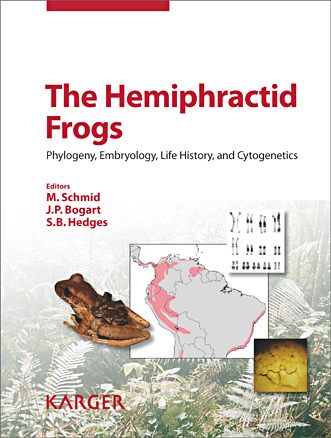The Hemiphractid Frogs
Karger Publishers, 2013.
This monograph is an exhaustive analysis of the biology of hemiphractid frogs, presenting results obtained over a 43-year period on 16 expeditions to Central and South America, Trinidad and Tobago and from several laboratories (Canada, Ecuador, Germany, and USA). The focus of this study is on chromosomes, but it also includes very detailed chapters on phylogeny, classification, biogeography, and especially on reproduction, oogenesis, spermatogenesis, and embryogenesis. Further notable sections are devoted to developmental biology, life history and population declines in hemiphractids. The major proportion of this book describes the karyotypes of 397 individuals representing 23 hemiphractid species. All karyotypes are illustrated by superb photographs selected from many hundreds taken. Modern techniques of preparation including special staining, molecular probes, in situ hybridization, and genome size measurements were used to generate these data which are also interpreted in context with the cytogenetic data published for other amphibian taxa or vertebrates. Providing a wealth of current and archival information on hemiphractid biology and cytogenetics, this monograph is recommended for specialists in the fields of zoology, herpetology, embryology and cytogenetics, as well as for students with an interest in vertebrate cytogenetics.

